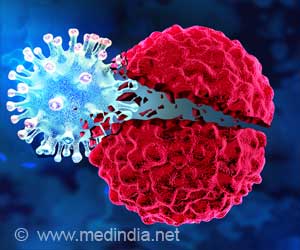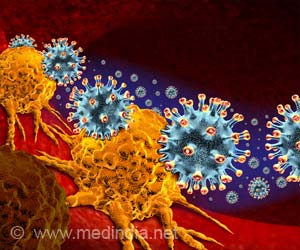New study throws light on molecular mechanism related to Hepatitis C and risk of liver cancer
The exact mechanism by which Hepatitis C could cause liver cancers is has been very poorly understood in the previous years. Researchers from the University of Texas have now discovered a biochemical pathway believed to play a key role in the association between liver cancer and Hepatitis C. The link or association is very similar to the already established link between the human papilloma virus (HPV), cervical cancer and genital warts.
“What we’ve found is that one of the hepatitis C virus proteins targets a cell protein that is crucial for suppressing the development of tumors, interfering with its ability to control cell proliferation. By knocking out this ‘tumor suppressor’ and promoting the proliferation of liver cells, this viral protein is setting up the liver for cancer”, according to Dr. Stanley M. Lemon, senior author of the paper.Nearly 85% of liver cancers in the United States occur in Hepatitis C affected individuals. In addition, a more than 200 million people are believed to suffer from the chronic disease worldwide. In most of the cases, the sufferer is totally unaware of the infection. This facilitates widespread damage to the liver following the initial episode of infection. Under these circumstances, a liver transplant may be the only source of hope left for survival.
The currently available therapy with interferon represents the only effective treatment. This however is valuable only in 50% of the cases. In addition, it is also associated with a number of adverse effects. Failure to respond to therapy increases the chance of developing either cirrhosis or liver cancer.
Reduced quantities of the protein product of the retinoblastoma gene have been found in cells that harbor the Hepatitis C ‘replicon’. A replicon is nothing but a part of the genetic material of the hepatitis C virus that has the intrinsic property of self-replication and protein production. Experimental studies involving the replicons have enabled researchers identify a tumor suppressor protein, named NS5B. This protein has been found to play an important role in breakdown of the retinoblastoma gene by attaching to it. This molecular mechanism is very similar to the way HPV causes cancer growth.
The study has proved to be very valuable especially in the current scenario where no standard cure for Hepatitis C is present. Studies such as these could eventually pave way for the development of novel anti-viral treatments in the future. If hepatitis C were to be ‘cured’ effectively, it would mean the end of associated liver cancers.











